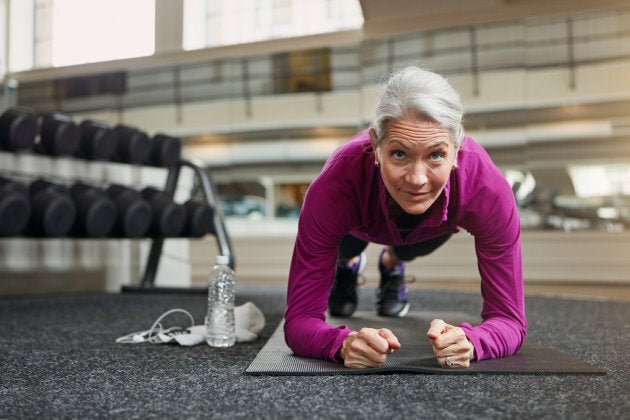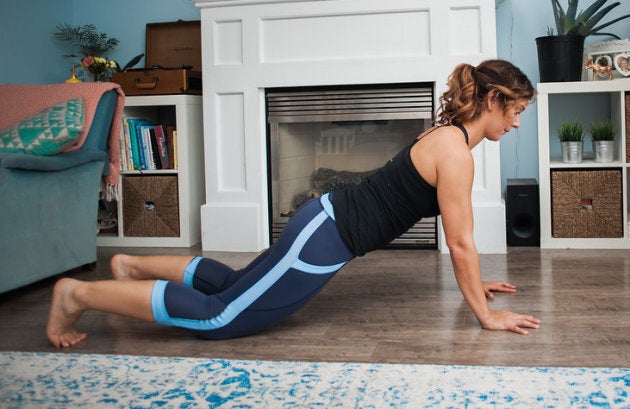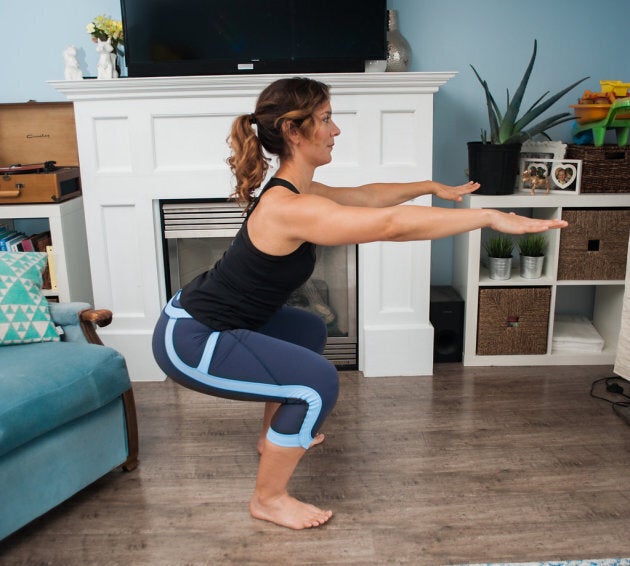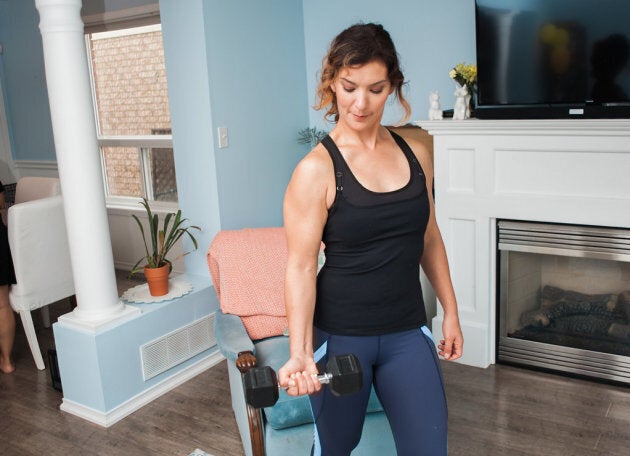Every three seconds a bone is fractured due to osteoporosis. This statistic is not only concerning, but deadly considering that those who suffer common fractures (such as hip fractures) have a 28 per cent to 38 per cent greater risk of death within the first year of breaking the bone.
This may sound bleak, but there is a silver lining! Osteoporosis is preventable and new research shows that bone can continue to grow, preventing and even reversing bone loss . Even in your 50s, 60s, 70s and beyond.

Exercise (along with a healthy diet) plays one of the most important roles in reversing bone loss, increasing your bone density and preventing fractures, but the type of exercise you do matters.
Certain exercises won't enhance bone mass, and in fact, certain moves may increase your risk of breaks and fractures. By avoiding these three movements and swapping them for osteoporosis-friendly movements, you'll get the amazing benefits of stronger bones and a healthy quality of life.
Crunches and twisting:
For a strong core and a flat tummy, crunches and twisting have been the go-to exercises for many, but the forward bending puts a lot of pressure on the lower spine, compressing the vertebrae and increasing your risk of spinal fractures.
What to do instead
Ab exercises that maintain proper spinal alignment, without forward bending or crunching will not only help to create a flat tummy and a strong core, they'll also increase your bone density. The plank is one of the best exercises to do in place of standard crunches.
If you're new to planks, or if you haven't done them in a while, start with a standing plank, using a counter top or a sofa arm instead of doing a plank on the ground. The higher your upper body angle, the easier the exercise will be.
Once you've mastered the standing plank, progress to a modified floor plank.

- Place your hands directly under shoulders
- Contract your stomach as you lean forward, placing your weight on the front of your thighs
- Hold this position for 30 seconds to one minute
- repeat one to three times
High-intensity impact exercises:
High-intensity interval training is incredibly popular at the moment as one of the forms of fitness touted to create your fittest and healthiest quality of life, but many of the high-intensity workouts require jumping and high-impact movements that can harm porous bone and increase your risk of fractures.
If you currently have osteoporosis, avoid high-impact exercises. If the benefits of high intensity interval training is something that you're curious to try, there are safer methods that can enhance bone density at the same time.
What to do instead
Leg exercises are a powerful way to increase your bone density in your hips and legs, and may reduce your risk of hip fractures. Performing leg exercises can also increase your heart rate, taking the place of high-impact jumping and hopping movements.
Once you've mastered exercise form, you can hold weights in either hand and increase the speed of the movement (safely). This elevates your heart rate, creating a perfect alternative to jumping, high-intensity interval training moves.
Begin with a squat exercise:

- Stand with your feet shoulder width apart and your arms raised to shoulder height
- Then sit down, weight in heels. Go as low as you feel comfortable
- Then rise to standing. Keep your arms raised to shoulder height
- Repeat 12 to 15 times
Aqua Fit:
All too often, new clients come to me wondering why their bones are weak after years of consistent participation in their local aqua fit class. Aqua fit is a great cardiovascular workout for heart health and for fun, but if your main objective is to increase your bone mass, then the resistance from the water just isn't enough and this workout needs to be avoided.
Unlike forward bending and twisting, you can continue to do aqua fit for heart health and pleasure, but it's important to incorporate bone-enhancing exercises into your workout routine, too.
What to do instead
Weight-bearing activities are among the best form of exercise to reverse bone loss and increase bone density. Weight-bearing exercises work against the resistance of an object such as a band, a weight or even lifting your own body weight.
This type of exercise plan can increase your lean muscle by as much as three per cent, and it only takes two times per week of a full-body weight bearing program to achieve these amazing results.
The most important part is to find weights that feel hard, yet doable. If the weight is too light, your bones won't respond, if the weight is too heavy you risk improper form and injury.

- Find a weight that feels hard but doable
- Choose how many repetitions you'd like to complete
- Do the exercise with proper form. The last three repetitions should feel hard but doable while keeping proper form. If you can't keep form, or you can't continue to lift the weight, then it's too heavy and you'll need to reduce the weight.
There are better ways of gauging the exact amount of weight you'll need to lift, but there are a few extra steps you'll need to follow.
Here's a quick recap:
If your workout includes two days a week of weight-bearing exercises, and all exercises avoid twisting and forward bending, you're on the best path for better bone density and a happier and healthier quality of life.
As an added precaution, check with your health care provider before you begin your workout plan. Then, you're all ready to go!
Also on HuffPost: